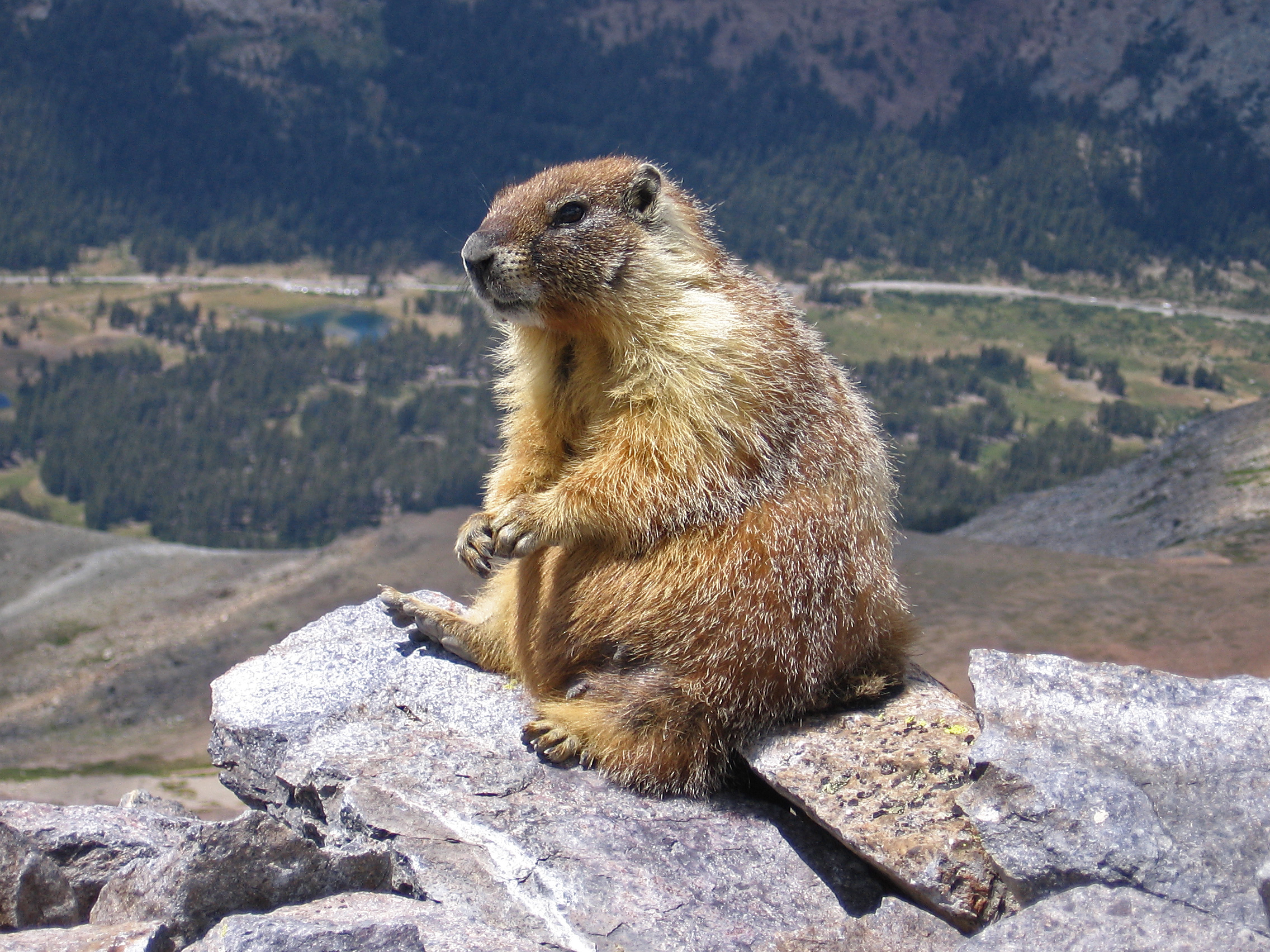- Yellow-bellied Marmot
Taxobox
name = Yellow-bellied Marmot
status = LR/lc | status_system = IUCN2.3

image_width = 300px
regnum =Animal ia
phylum = Chordata
classis =Mammal ia
ordo =Rodent ia
familia =Sciuridae
genus = "Marmot a"
subgenus = "Petromarmota "
species = "M. flaviventris"
binomial = "Marmota flaviventris"
binomial_authority = (Audubon and Bachman, 1841)The Yellow-bellied Marmot ("Marmota flaviventris"), also known as the Rock Chuck, is a ground
squirrel in themarmot genus. It lives in thewestern United States and southwesternCanada , including theRocky Mountains and the Sierra Nevada. It inhabits steppes, meadows, talus fields and other open habitats, sometimes on the edge ofdeciduous orconiferous forests, and typically above 2000 metres (6500 ft) of elevation. Yellow-bellied Marmots usually weigh between 5 and 11 pounds (2 and 5 kg) when fully grown. They get fatter in the fall just before hibernating. A marmot's habitat is mostly grass and rocks with few trees. Their territory is about 20,000 to 30,000 square metres (about 6acre s) around a number of summer burrows.Marmots choose to dig
burrow s under rocks because predators are less likely to see their burrow. Predators include wolves,fox es, andcoyote s. When a marmot sees a predator, it whistles to warn all other marmots in the area (giving it the nickname the whistle pig). Then it typically hides in a nearby rock pile.Marmots reproduce when about 2 years old, and may live up to an age of 15 years. They reside in colonies; a colony is a group of about 10 to 20. Each male marmot digs a burrow soon after he wakes up from hibernation. He then starts looking for females, and by summer has 1 to 4 females living with him. Litters usually average 4-5 offspring per female. Marmots have what is called "harem-polygynous"
mating system , which means the male defends 1-4 mates at the same time.Yellow-bellied Marmots are diurnal like most mammals. The marmot is also an
omnivore , eatinggrass , leaves,flower s,fruit ,grasshopper s, and bird eggs.Marmots are not hunted for sport but are sometimes killed by farmers.
Yellow-bellied Marmots include "toilet rooms" in their burrows as well as living rooms, bedrooms and eating rooms.Fact|date=July 2007
References
*cite web|url=http://animaldiversity.ummz.umich.edu/site/accounts/information/Marmota_flaviventris.html | title=Marmota Flaviventris: Information | author=Ballenger, L. | year=2002 | work= [http://animaldiversity.ummz.umich.edu/site/index.html Animal Diversity Web] | publisher=
University of Michigan Museum of Zoology | accessdate=2007-09-12
* [http://www.bio.davidson.edu/people/vecase/Behavior/Spring2003/Tyndall/hab.htm Habitat of the Yellow-bellied Marmot]
*
*ITIS|ID=180140|taxon=Marmota flaviventris|year=2006|date=18 March
*Thorington, R. W. Jr. and R. S. Hoffman. 2005. Family Sciuridae. Pp. 754-818 "in" Mammal Species of the World a Taxonomic and Geographic Reference. D. E. Wilson and D. M. Reeder eds. Johns Hopkins University Press, Baltimore.External links
* [http://www.nps.gov/grba/pphtml/subanimals6.html National Park Service]
Wikimedia Foundation. 2010.
